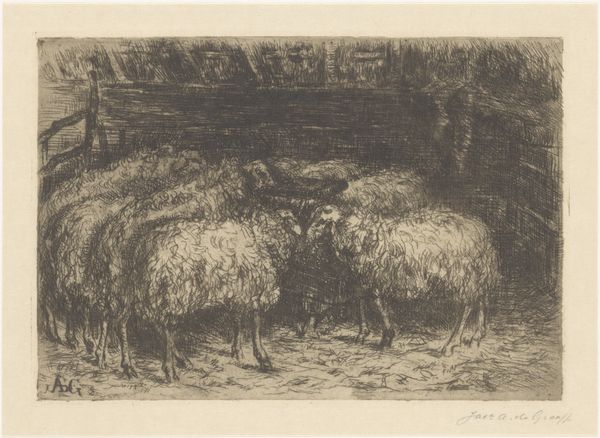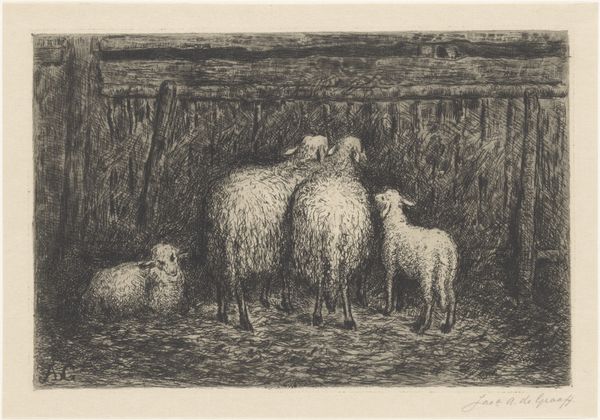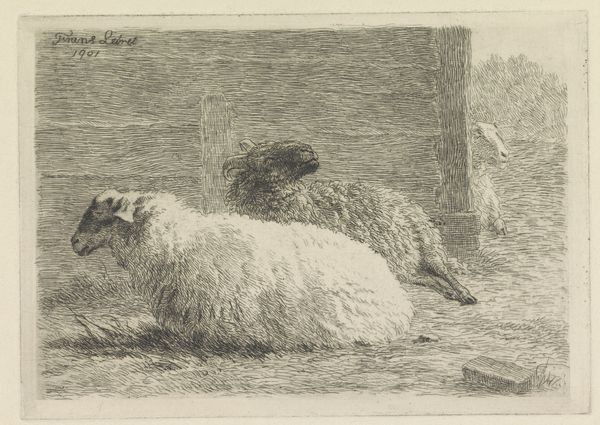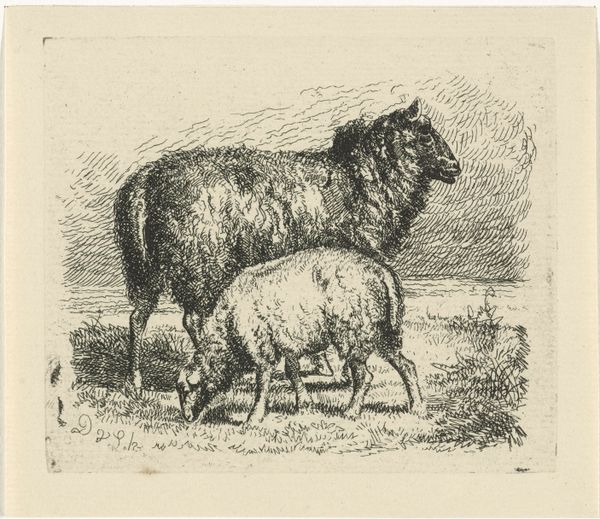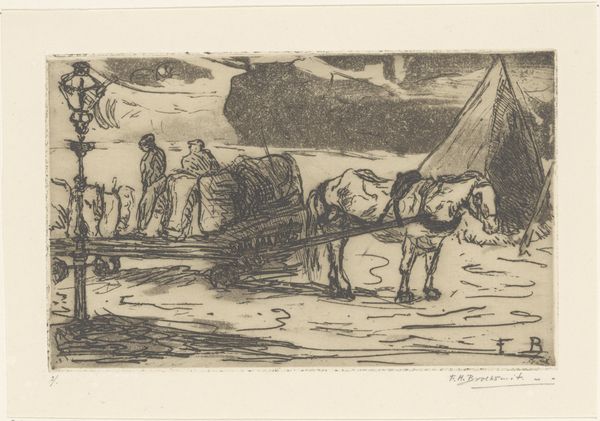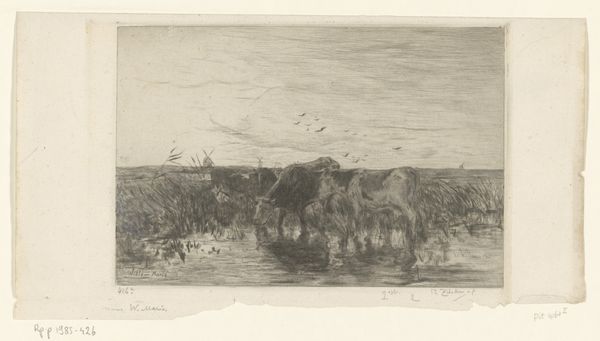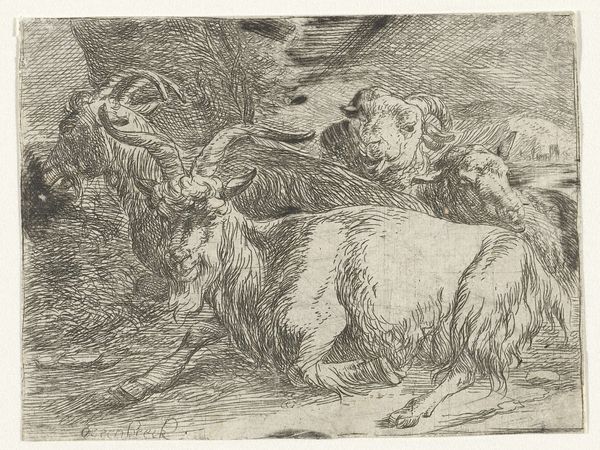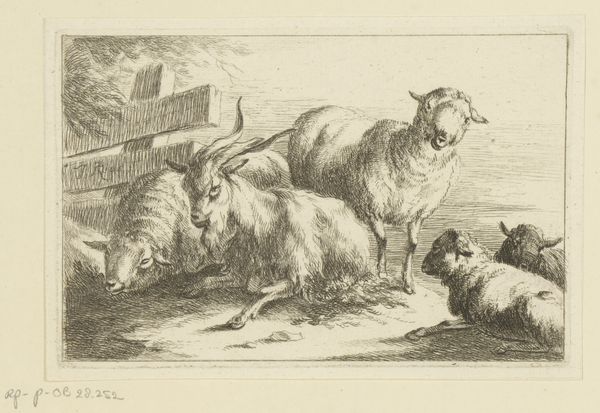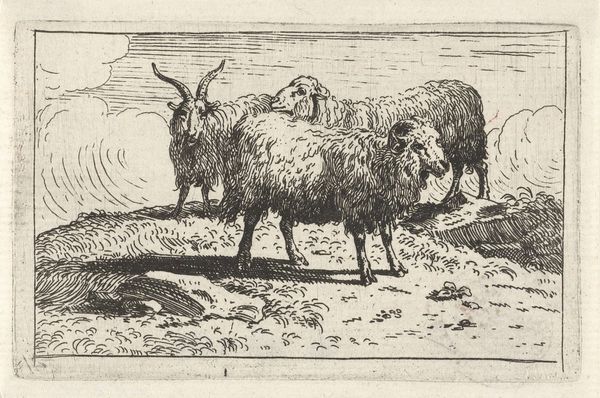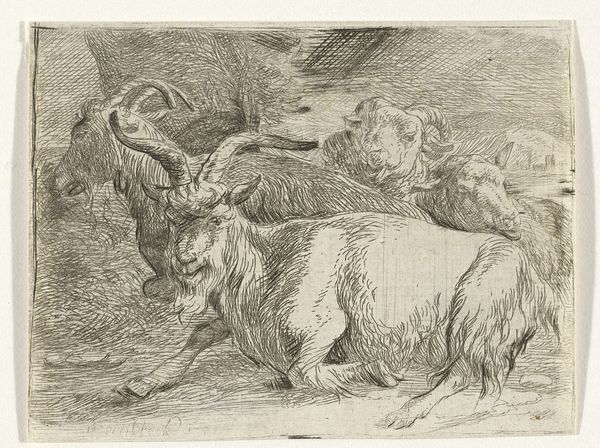
drawing, print, etching
#
drawing
#
ink drawing
# print
#
etching
#
landscape
#
figuration
#
pencil drawing
#
genre-painting
Dimensions: height 132 mm, width 190 mm
Copyright: Rijks Museum: Open Domain
Editor: This etching by Jacoba de Graaff, "Sheep and a Shepherd in a Stable," thought to be made sometime between 1867 and 1911, offers such a tender, quiet scene. There's something so intimate about the dark, scratchy lines that suggest the textures of wool and weathered wood. I’m struck by how contained the composition is, how it makes me feel like I’m peering into a private world. What details draw your eye when you look at this piece? Curator: It’s interesting that you mention feeling like you're peering into a private world. The compressed space definitely contributes to that feeling, doesn’t it? For me, I'm particularly drawn to the light. It seems to cling to the wool of the sheep, doesn't it? This soft light immediately reminds me of the etchings of Rembrandt, though filtered through de Graaff’s own lens of domesticity. It's less about grand narratives, and more about the quiet dignity of everyday labor and rural life. What do you make of the lone shepherd in the background, almost disappearing into the darkness? Editor: Good question! It almost looks as if the shepherd has given themselves to the scene as an audience. Their position and shadowed body definitely speaks to me, almost acting as a framing device. That stillness…it almost feels reverential. What does it convey to you? Curator: I like the term you used there - Reverential. Perhaps the Shepherd recognizes themself in a similar light to their herd? Consider too, it makes you wonder, doesn't it, what filled de Graaff's thoughts as she worked on this piece? Was she finding solace in this tranquil image, a connection to a simpler life amidst the burgeoning industrialization of the Netherlands? I tend to reflect upon the personal significance these subjects might have had for the artist when viewing artwork such as this. It's difficult not to, when presented with an artist so removed and with only their creations as memoir. Editor: That really shifts my perspective! Before I was purely admiring the technique, now you’ve me imagining the story of this artist reflecting during a period of growth. Thanks for a unique insight. Curator: Of course. The most profound meaning I find in art comes from imagining. Never limit your imagination, and never shy away from the absurd if that is where the journey takes you.
Comments
No comments
Be the first to comment and join the conversation on the ultimate creative platform.
